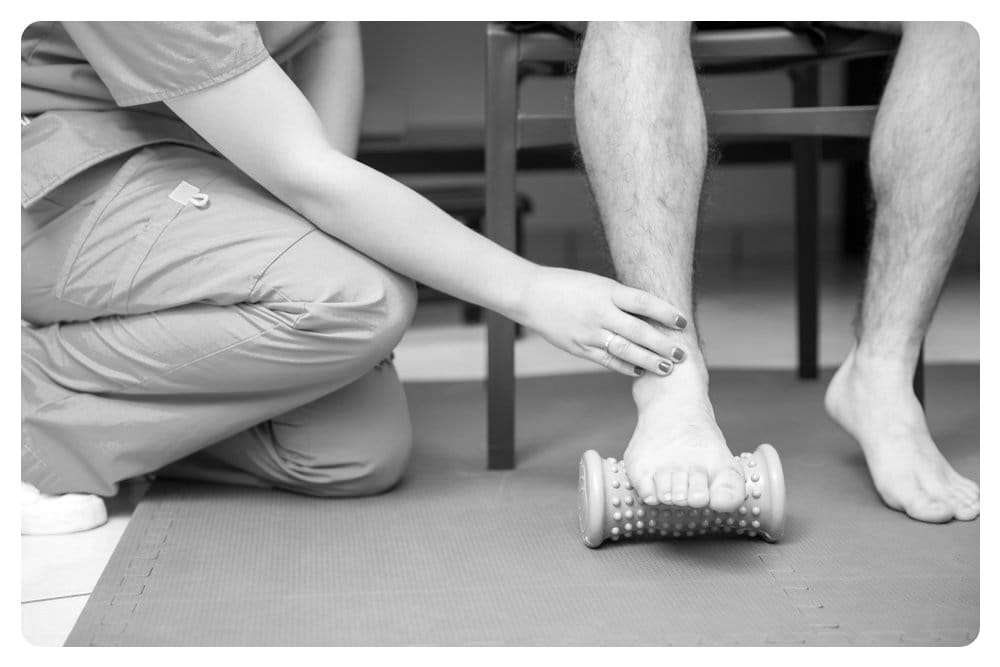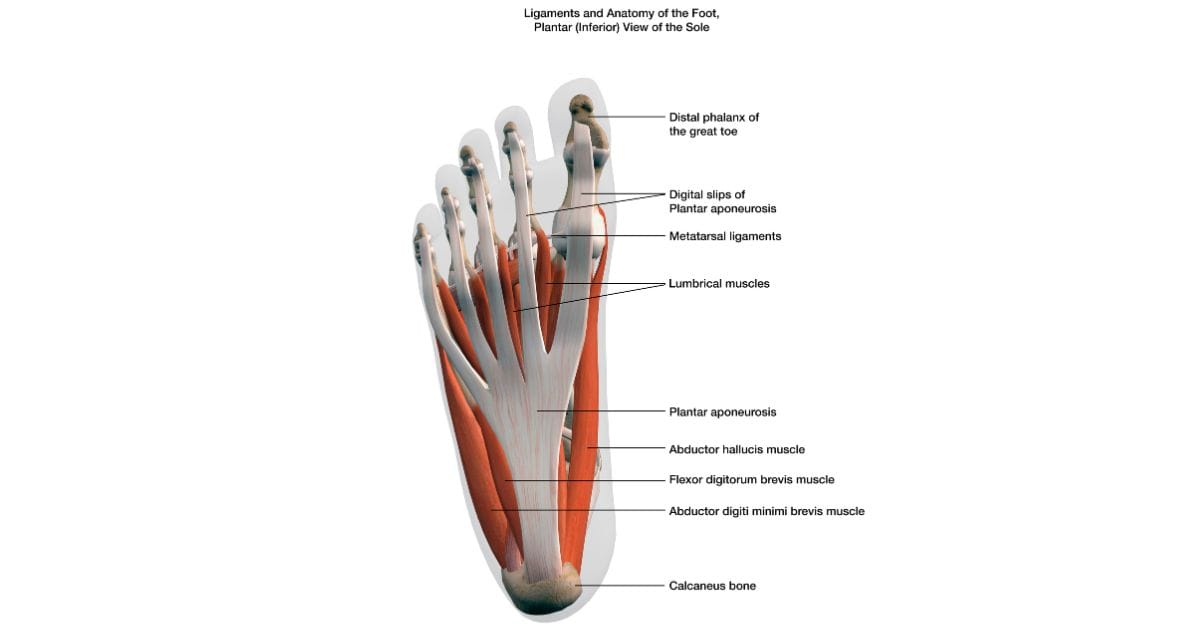Plantar Fasciitis Treatments: Relief and Recovery Tips
Effective treatment for plantar fasciitis involves a combination of rest, stretching exercises, orthotic devices, and in some cases, medical interventions.

Plantar fasciitis is a common condition that causes heel pain, often characterized by a stabbing sensation that usually occurs with your first steps in the morning.
As you get up and move more, the pain normally decreases, but it might return after long periods of standing or when you stand up after sitting.
The condition involves inflammation of a thick band of tissue that runs across the bottom of your foot and connects your heel bone to your toes (plantar fascia).
Key Takeaways:
- Understanding the symptoms and causes of plantar fasciitis is crucial for effective treatment.
- A combination of home remedies, physical therapy, and medical interventions can provide relief.
- Consistency in treatment and preventive measures can help manage and potentially resolve plantar fasciitis.
Anatomy of a Foot
The human foot is a marvel of biomechanical engineering, comprising intricate structures that facilitate movement, support body weight, and absorb shock. Understanding the anatomy of the foot is essential for athletes, healthcare professionals, and anyone interested in foot health.

In this article, we'll delve into the fascinating world of foot anatomy, exploring its bones, muscles, ligaments, and functions, to gain a deeper appreciation for this vital part of the human body.
Recognizing Symptoms
If you're experiencing a sharp pain in the bottom of your foot near the heel, there's a chance you might be dealing with plantar fasciitis.
The pain is often worse in the morning when you take your first steps out of bed, or after sitting for a long time.
It can also be triggered by long periods of standing or when you get up after sitting. The pain isn't typically felt during the activity but rather just after stopping.
Causes and Risk Factors
Plantar fasciitis is believed to arise from repeated strain and tearing of the plantar fascia.
Certain factors can increase your risk, including obesity, which puts extra stress on the plantar fascia, and occupations that require a lot of walking or standing on hard surfaces.
Long-distance runners, those with structural foot problems, and individuals wearing shoes with inadequate support are also at higher risk.
Home Remedies
One of the first steps in plantar fasciitis treatment is to reduce inflammation and pain at home.
Resting your foot and applying ice can help decrease swelling. Over-the-counter pain relievers like ibuprofen or naproxen can also provide temporary relief.
Additionally, exercises that stretch the plantar fascia and Achilles tendon can be beneficial.
Proper Footwear
Wearing supportive shoes is vital in treating and preventing plantar fasciitis. Avoid high heels and shoes with little or no arch support.
Instead, choose shoes with a cushioned sole and sufficient arch support. Sometimes, orthotic inserts or custom-fitted arch supports might be necessary to distribute pressure to your feet more evenly.
Physical Therapy and Exercises
Physical therapy can play a significant role in plantar fasciitis treatment. A physical therapist can show you a series of exercises to stretch the plantar fascia and Achilles tendon and to strengthen lower leg muscles, which stabilize your ankle and heel. Another technique is applying athletic taping to support the bottom of your foot.
Night Splints and Orthotics
Night splints are another treatment option. They stretch your calf and the arch of your foot while you sleep.
This keeps the plantar fascia and Achilles tendon in a lengthened position overnight and facilitates stretching.
Orthotic devices you wear in your shoes can also help distribute pressure to your feet more evenly.
Medical Treatments
If several months of conservative treatments don't relieve your pain, your doctor might recommend more invasive procedures.
Options may include corticosteroid injections to ease pain and inflammation, extracorporeal shock wave therapy to stimulate healing, or ultrasonic tissue repair.
Surgery
Surgery is typically the last resort for plantar fasciitis treatment and is only considered when pain is severe and all other treatments have failed.
The procedure involves detaching the plantar fascia from the heel bone to reduce tension. It's important to discuss the potential risks and benefits with your doctor.
Preventing Plantar Fasciitis Recurrence
Prevention is key to managing plantar fasciitis. Maintain a healthy weight to minimize the stress on your plantar fascia.
Regularly stretch your arches, Achilles tendons, and calf muscles. Make sure to wear supportive shoes and replace them before they wear out.
Lifestyle Adjustments for Long-Term Relief
Incorporating lifestyle changes can also help with the long-term management of plantar fasciitis.
Develop a routine that includes a mix of low-impact exercises like swimming or cycling.
Pay attention to your body's signals and avoid activities that make your heel pain worse.
Summary
Plantar fasciitis treatment involves a multifaceted approach that includes home remedies, proper footwear, physical therapy, and possibly medical interventions. Understanding the condition, consistent treatment, and preventive measures are essential for relief and management. If you're struggling with heel pain, it's important to take action and consult with a healthcare professional to determine the best course of treatment for your situation.
FAQ Section
Q 1: What is plantar fasciitis, and what causes it?
A: Plantar fasciitis is a common foot condition characterized by inflammation of the plantar fascia, a thick band of tissue that runs along the bottom of the foot, connecting the heel bone to the toes.
This condition typically presents as heel pain, especially with the first steps in the morning or after prolonged periods of rest. Plantar fasciitis can occur due to various factors, including overuse, biomechanical issues, and improper footwear.
Individuals who spend long hours on their feet, such as athletes, runners, and healthcare workers, are particularly susceptible to developing plantar fasciitis. Other contributing factors may include obesity, flat feet, high arches, and tight calf muscles.
Understanding the underlying causes of plantar fasciitis is essential for implementing effective treatment strategies and preventing the recurrence of symptoms.
Q 2: What are the most effective treatments for plantar fasciitis?
A: Several treatment options are available for managing plantar fasciitis and alleviating symptoms. One of the primary approaches is conservative treatment, which may include rest, ice therapy, stretching exercises, and over-the-counter pain medications to reduce inflammation and relieve pain.
Physical therapy is often recommended to improve flexibility, strengthen the muscles of the foot and ankle, and correct biomechanical imbalances contributing to plantar fasciitis. Additionally, orthotic devices, such as shoe inserts or custom-made orthotics, can provide support and cushioning to reduce strain on the plantar fascia.
In more severe cases, corticosteroid injections or extracorporeal shockwave therapy (ESWT) may be considered to alleviate pain and promote healing. Individuals with plantar fasciitis need to work closely with healthcare professionals to develop a comprehensive treatment plan tailored to their specific needs and lifestyle.
Q 3: How can I prevent plantar fasciitis from recurring?
A: Preventing the recurrence of plantar fasciitis involves adopting healthy lifestyle habits and taking proactive measures to support foot health. This includes wearing supportive and properly fitting footwear with adequate arch support and cushioning to reduce strain on the plantar fascia.
It's also essential to avoid activities that exacerbate symptoms, such as prolonged standing or high-impact exercises, and to gradually increase activity levels to prevent overuse injuries. Regular stretching exercises targeting the calf muscles and plantar fascia can help maintain flexibility and prevent tightness that may contribute to plantar fasciitis.
Maintaining a healthy weight and incorporating low-impact exercises like swimming or cycling into your routine can also reduce stress on the feet and lower the risk of recurrence.
By implementing these preventive measures and listening to your body's signals, you can minimize the likelihood of experiencing recurrent episodes of plantar fasciitis and maintain optimal foot health.
